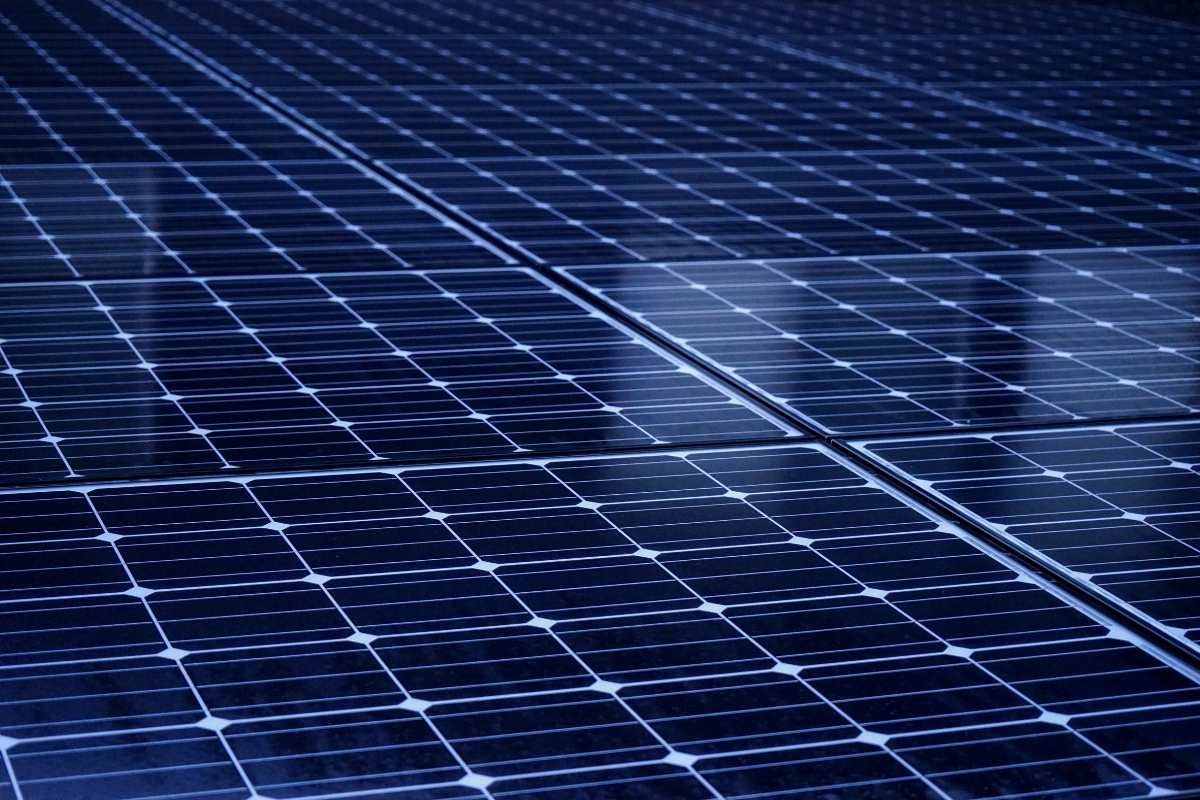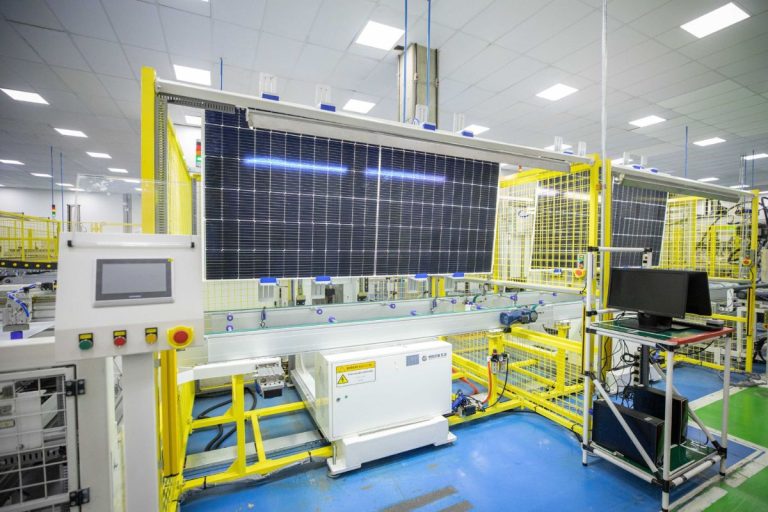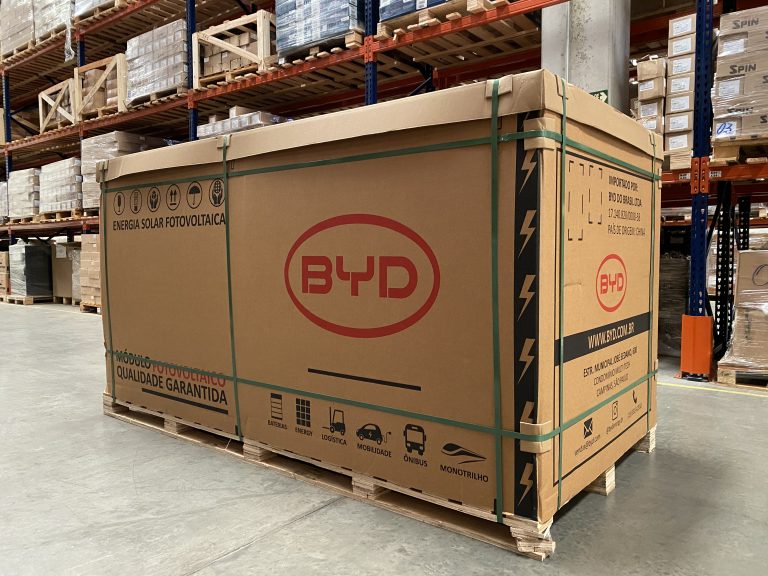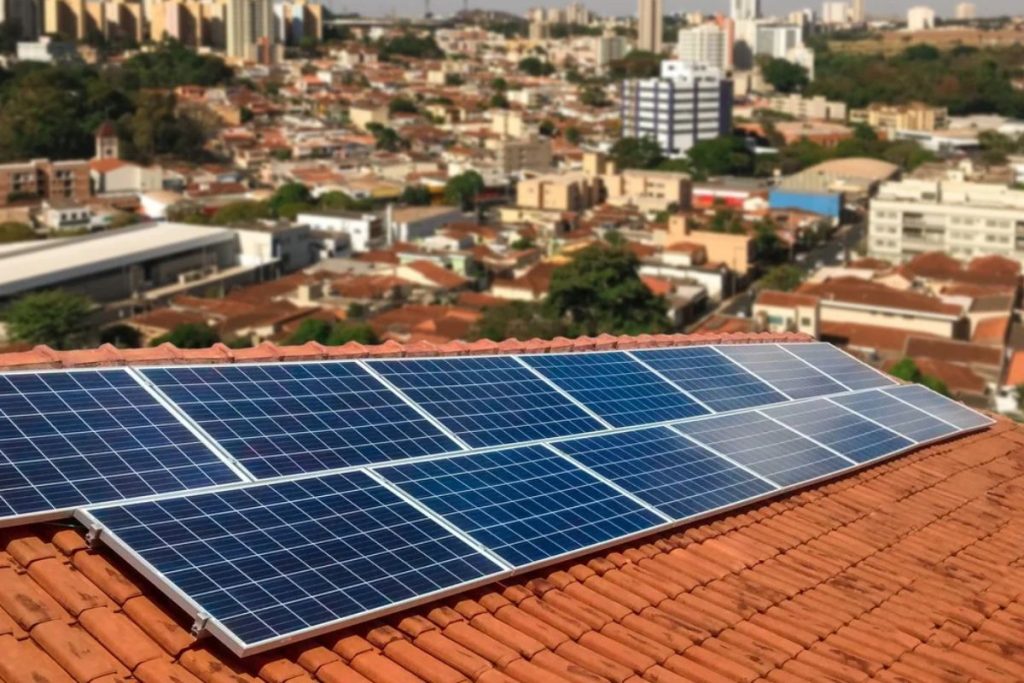Imagine a sunny day when your photovoltaic modules produce more energy than your home or business needs at that moment. All this surplus energy can be stored and used later, even when the sun has gone down or on cloudy or rainy days.
Solar energy storage turns renewable energy into something practical and reliable, breaking down the barrier of intermittency - dependence on sunlight - and offering a solution for having clean energy available day and night.
In this article, we'll understand how energy storage solar works, its impact on everyday life and how it promotes stability, economy and sustainability.
What is solar energy storage?
Solar energy storage is, in a nutshell, the act of capturing and storing the electricity generated by solar panels for future use. This is done by means of batteries, which receive the energy produced during the day, especially during peak sunlight hours, and store it for use when needed. This process solves one of solar energy's biggest challenges: its dependence on the sun.
Without storage, energy can be consumed immediately and, in the case of on-grid systems, surplus solar energy is sent to the electricity grid, generating credits that compensate for consumption at night or on days when generation is low. However, with storage, the energy is used to the maximum, allowing you to have access to clean and reliable electricity, even at night or in emergency situations such as power outages.
In everyday life, the impact of storage is significant. Imagine a house that, during the day, uses the sun's energy to power household appliances and, at night, continues to function normally thanks to the stored energy.
Or a company that reduces its energy costs by using batteries to balance consumption during peak times, when electricity from the grid is more expensive. O storage brings not only convenience, but also energy independence and a greater contribution to sustainability.
BYD batteries and energy storage

Batteries play a fundamental role in solar energy storage. They allow the energy generated by the solar panels during the day to be used at night or during periods of low solar incidence, making the system more efficient and ensuring greater energy independence.
In addition, they help stabilize the electricity grid, reducing the impact of variations in energy supply and demand.
Among the various technologies available on the market, some stand out for their safety, durability and efficiency, essential characteristics for both homes and large commercial projects.
In this scenario, the BYD is widely recognized as one of the global references in energy storage systems. Let's find out about the main types of batteries in the BatteryBox range and how they meet different needs.
BatteryBox
The line BYD BatteryBox is one of the most versatile and efficient in the solar energy storage market. It includes different models designed to meet both residential and industrial demands, ensuring that each customer finds the perfect solution for their needs.
Premium LVS and LVL
These models are ideal for homes and small businesses. The great thing about them is their modularity: you can start with a smaller capacity and expand as your needs grow. This is especially useful for those who want to start with a smaller investment and grow over time.
LV Flex Lite
If you need an intermediate solution, the LV Flex Lite is compact, efficient and offers excellent performance in locations with moderate energy demands. It combines practicality with efficiency, making it a very versatile option.
Premium HVS and HVM
Designed for larger systems or commercial applications, these high-voltage models are perfect for those who need a robust backup or for projects that require high capacity. With them, companies and industries can guarantee a stable power supply, even in challenging conditions.
These products also have advantages such as compatibility with inverters single-phase and three-phase, easy expansion and safety certifications that follow the strictest international standards. The quality of the BatteryBox range is widely recognized, and BYD has already received several awards highlighting its leadership in the renewable energy sector.
Hybrid and off-grid solar energy storage
When choosing to install a solar system, one of the main decisions is to choose between a hybrid system, connected to the electricity grid, or an off-grid system, completely autonomous, or a hybrid system, which combines the characteristics of both. Each option has its own particularities, especially with regard to energy storage. Understanding how these configurations work and their differences can help you determine which is best suited to your needs, lifestyle and energy consumption objectives.
Hybrid system with storage
In hybrid systems, the energy generated by the photovoltaic modules is used directly and the surplus can either be sent to the public electricity grid, creating a compensation system known as "energy credits", or stored in batteries for later use. This means that when your generation is greater than your consumption, the surplus can be directed to the grid or to the batteries, offering flexibility in the use of energy.
When combined with storage systems, hybrid systems gain even more versatility. The batteries store part of the energy produced, guaranteeing a local reserve that can be used at critical times, such as power outages, or at peak consumption times. This offers the best of both worlds: savings, by reducing electricity bills and optimizing the use of solar energy, and security, by having an immediate energy backup and the possibility of operating autonomously if necessary.
For example, imagine a small business that uses solar energy during the day, when demand is highest, and at night takes advantage of both the credits accumulated on the grid and the energy stored in its batteries. This combination significantly reduces operating costs, increases the reliability of the energy supply and allows for more efficient management of energy consumption.
Off-grid in practice
Off-grid systems, on the other hand, operate completely autonomously, without connection to the electricity grid. In this configuration, energy storage plays an even more crucial role. All energy needs depend exclusively on energy generated and stored locally.
Batteries in off-grid systems need to be sized according to daily consumption and local weather conditions. This is especially relevant in remote areas where grid power is simply not available.
A practical example is that of isolated communities in the Amazon, which use off-grid solar systems to guarantee electricity in a sustainable way. Similarly, sustainable farms or remote ranches have adopted this solution to power equipment and systems without relying on fossil fuel generators.
The main advantage of off-grid is total independence from energy utilities. However, it requires a larger initial investment, especially in high-capacity batteries, and careful planning to ensure that the stored energy is sufficient for prolonged periods of low solar generation.
Storing energy goes beyond saving money

Storing solar energy is more than just saving money on your electricity bill; it's a smart way to make the most of what renewable energy can offer. With an efficient storage system, you can use the energy generated at times when electricity tariffs are higher, avoiding additional costs. This flexibility not only optimizes the use of solar energy, but also gives you greater control over your spending.
Efficiency and smart economics
Storage systems allow energy to be used strategically, especially in places where tariffs vary according to the time of day. For example, energy captured during the day, when solar production is abundant, can be stored for use at night, when demand and prices are generally higher. This eliminates the need to pay high tariffs and makes consumption more efficient.
In addition, at times of low solar generation, such as cloudy or rainy days, batteries offer an economical alternative, reducing the need to rely on the electricity grid and its price fluctuations.
Sustainability and reducing the carbon footprint
Storage also has a significant impact on sustainability. By maximizing the use of locally generated renewable energy, you reduce your dependence on traditional energy sources, often based on fossil fuels. This means fewer greenhouse gas emissions and a smaller carbon footprint.
In a global context, the adoption of storage systems contributes to the energy transition, helping to integrate more renewable sources into the electricity matrix and promoting a cleaner and more sustainable future.
Specific benefits for companies
For companies, the benefits go beyond saving on electricity bills. Storage systems offer greater financial predictability by helping to avoid unexpected spikes in energy costs. In addition, they guarantee energy security, especially in sectors that cannot afford to suffer supply interruptions, such as hospitals, industries or data centers.
Companies that adopt energy storage also stand out in the market, showing a commitment to sustainable practices. This can strengthen their image with customers and partners, as well as generating competitive advantages in a world increasingly concerned with environmental responsibility.
The price of solar energy storage
Solar energy storage is often seen only in terms of its initial cost, which may seem high at first glance. However, it is important to see it as a long-term investment, capable of generating savings, stability and sustainability.
By investing in batteries for storage, you not only reduce your dependence on energy utilities, but also protect your home or business from price fluctuations and supply drops. Over time, the savings generated in electricity consumption make up for the initial investment, as well as adding value to the property or enterprise.
Incentives that make storage more accessible
To facilitate access to sustainable technologies, there are various government incentives for renewable energy systems. Financing programs and credit lines with special conditions help reduce the financial barriers for those who want to install batteries or solar panels.
In addition, in many countries, energy compensation policies (such as electricity bill credits) further extend the financial benefits of this investment.
Financing as an affordable solution
Another way to make solar energy storage more viable is through financing offered by partner institutions. These allow the initial cost to be paid in installments, balancing the payments with the savings made on the electricity bill.
For example Santander, in partnership with BYDoffers attractive conditions for those wishing to adopt solar systems. Financing can be paid in installments over up to 120 months and comes with reduced interest rates. This allows customers to adjust their finances and take advantage of the immediate reduction in energy costs.
Choosing solar energy storage
Before choosing a solar energy storage system, it is crucial to consider your specific needs. Assess the amount of energy you consume, the space available for installation and how you intend to use the stored energy. Each home or business has its own particularities, and the choice of an ideal system will depend on these individual needs.
Factors such as capacity (the amount of energy you need to store), durability (the system's lifecycle) and the available budget will have a significant impact on your decision.
The solutions in BYD's BatteryBox range offer a variety of options to meet different demands. Larger systems, such as the Premium HVS and HVM models, are designed for high capacity and commercial applications, providing a robust backup and stable power supply.
For homes and small businesses, the Premium LVS and LVL models offer modularity, allowing capacity to be expanded as needs increase, ideal for those looking for a smaller initial investment with the possibility of growth.
If you're looking for an intermediate solution, BYD's LV Flex Lite is compact, efficient and offers excellent performance for moderate energy demands. All the models in the BatteryBox range stand out for their compatibility with single-phase and three-phase inverters, easy expansion and safety certifications that follow the strictest international standards.
To ensure that you make the most appropriate choice, it is essential to seek the help of a specialist. A qualified professional can carry out a detailed analysis of your energy demand, the space available and your budget, ensuring that you select the BYD solution that best suits your needs and make the most of the benefits of solar energy storage.
The future of solar energy is storage
With batteries, solar energy stops being intermittent and becomes a constant source, available at any time.
This guarantees less dependence on the electricity grid, more savings and a lower environmental impact. By storing solar energy, you make a difference in the fight against climate change.







